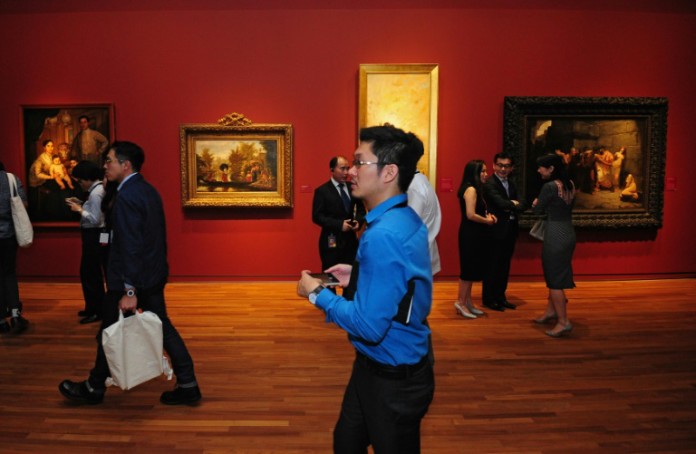SINGAPORE: Whenever he travels overseas, Mr Ng Boon Chew makes it a point to visit museums. That hasn’t necessarily been the case back at home, where he admits he rarely checks out what’s in his own backyard. But since the National Gallery Singapore opened a year ago, the 45-year-old Singaporean has visited four times.
During the festive opening celebrations last year, he went twice. He also later caught one of the museum’s international blockbuster shows on modernist art. Last month, he dropped by with his wife to check out the ongoing survey show of leading Singaporean ceramicist Iskandar Jalil, which he enjoyed – even if he still gets lost in the building.
“I sometimes still get confused with the focus of the exhibitions and get lost in the the layout of the building,” he said. “It’s not the best (museum) I’ve been to but it’s right up there. It’s something I can be proud of,” he said.
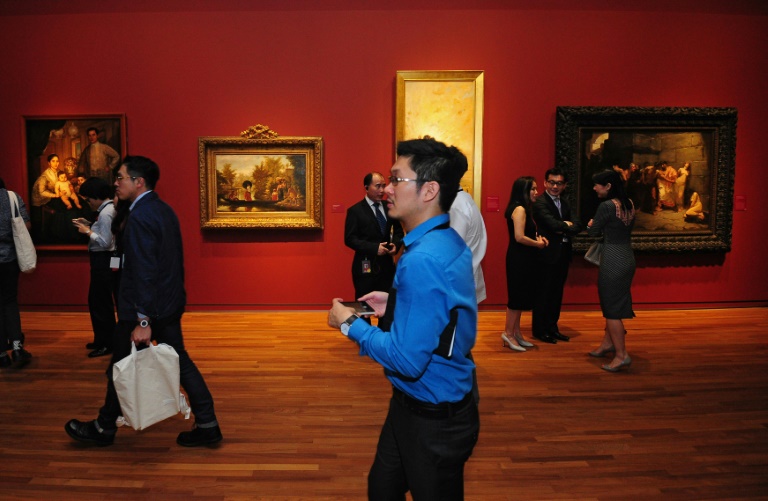
(Photo: AFP/Mohd Fyrol)
GETTING USED TO IT
For the past year, Singaporeans like Ng have had to get used not just to navigating the cavernous spaces and the huge amount of art seen inside the National Gallery, but to its very presence.
Not since the prickly spikes of the Esplanade were unveiled in 2002 has an art institution of such a scale captured the public’s imagination.
The S$532 million museum is widely regarded as the centerpiece of Singapore’s project of becoming a regional and international art powerhouse. The past decade has seen the emergence of a slew of festivals, art fairs, gallery enclaves, a biennale, and the revamp of other museums around the Civic District – and the National Gallery is seen as the final piece of the puzzle.
Once it opened on Nov 23, 2015, the museum went into overdrive to firmly establish itself in the arts and culture scene.
To date, it has presented nine exhibitions ranging from two anchor permanent shows on Singapore and Southeast Asian art to blockbuster collaborations with the likes of Centre Pompidou and Tate Britain. It has also launched smaller ones that featured important figures in the regional art scene such as Singapore’s Chua Ek Kay, Tang Da Wu, Tan Keng-Kee and Iskandar, Malaysia’s Redza Piyadasa, and the Philippines’ Johnny Manahan.
Surrounding these shows were countless programmes, ranging from children’s exhibitions and shows to film screenings and performances.
BUILD AND THEY WILL COME
All of these have resulted in more than 1.5 million visitors stepping foot inside the combined premises of what was once the former Supreme Court and City Hall. That number is expected to rise after its first anniversary festival, which will be held over two weekends beginning on Friday (Nov 25).
According to museum chief executive Ms Chong Siak Ching, the two permanent exhibitions alone drew 463,000 visitors in the first four months. Another big draw were its public programmes — 182,000 people went to events such as its open house weekends, musical performances and film screenings during the first few months.
Schools were a prime target, with the museum reaching out to 71,000 students through its outreach education efforts. To date, they’ve been in touch with more than 50 per cent of Singapore’s educational institutions, ranging from primary schools to junior colleges.
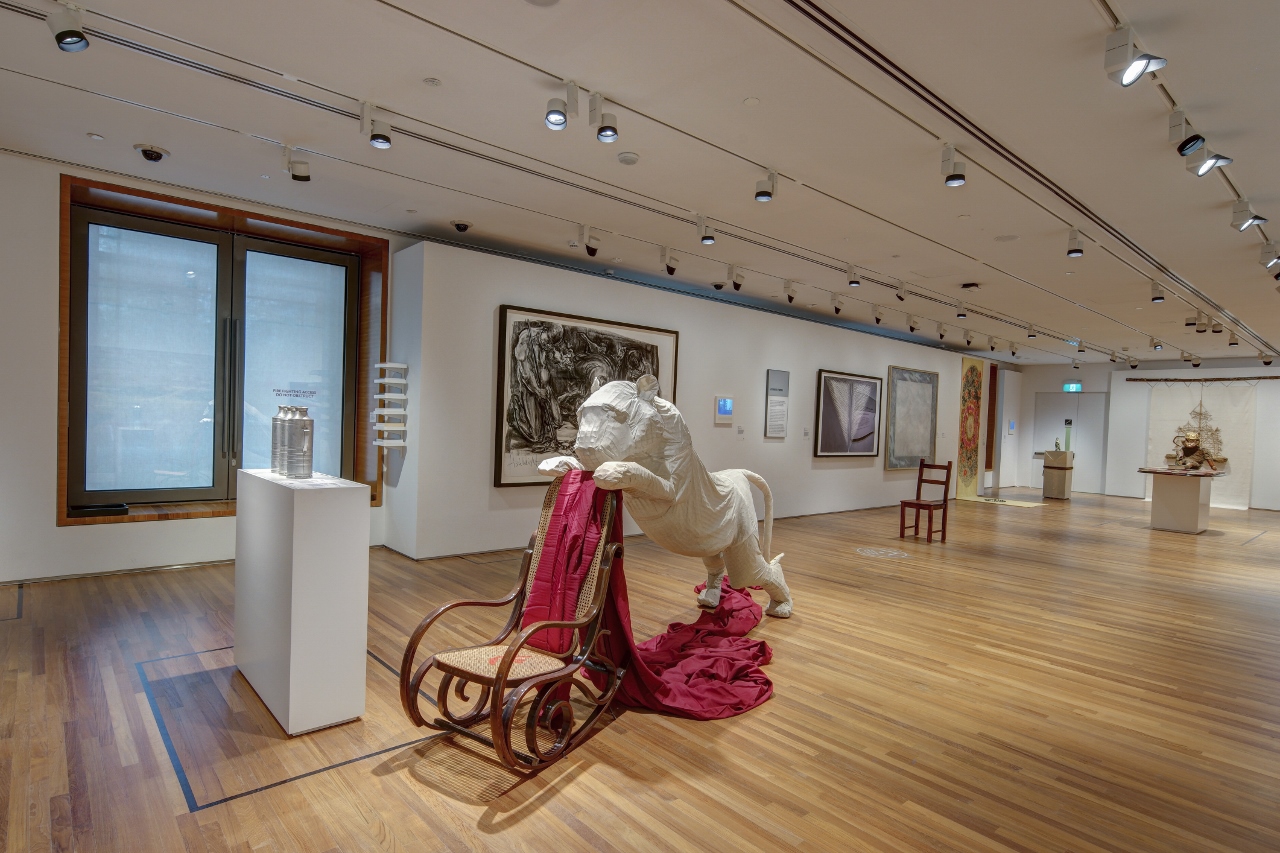
A section of Siapa Nama Kamu?, the museum’s permanent exhibition on Singapore art. (Photo: National Gallery Singapore)
With its seemingly solid visitorship, Ms Chong said they are now also looking at making these numbers sustainable.
“We are constantly looking at other aspects of engagement, including the amount of time each visitor spends at the Gallery and the number of repeat visits they make,” she said, adding that they have also tried to make the museum more inclusive, with initiatives such as art talks in dialect languages, tours in Singapore sign language, and easier access for persons with disabilities (including allowing guide dogs into the museum).
All these, coupled with mainly positive reactions from Singaporean and foreigners (the website Tripadvisor shows a 4.5 rating from 400 reviews) and even recent accolades at the Singapore Tourism Awards, point to a successful first year.
“The first year has been an active and hectic one for the Gallery, but at the same time it is immensely rewarding because of the encouraging reception so far,” said Ms Chong.
FAIR SHARE OF CONTROVERSIES
It hasn’t been all smooth-sailing for the museum, however. In the past year, it has had its fair share of drama and gaffes.
From the many name changes it went through before settling on the current, generic moniker, to online memes that poked fun at its logo, the National Gallery offered many talking points even before it opened to the public.
Once it did, it would occasionally be entangled in more controversy. Around the time of its opening celebrations last year, there came news of a family art collective, Holycrap.sg, being forced to take down its show at the museum cafe due to vague exhibition guidelines.
During a mini-festival in June, social media was abuzz with what was perceived as badly made large-scale reproductions of iconic paintings used for visitors’ photo-ops. One of the museum’s publicity videos was also taken to task for describing how paintings were now hung in a place where criminals were once sentenced to hang – a comparison that was done in bad taste according to some.
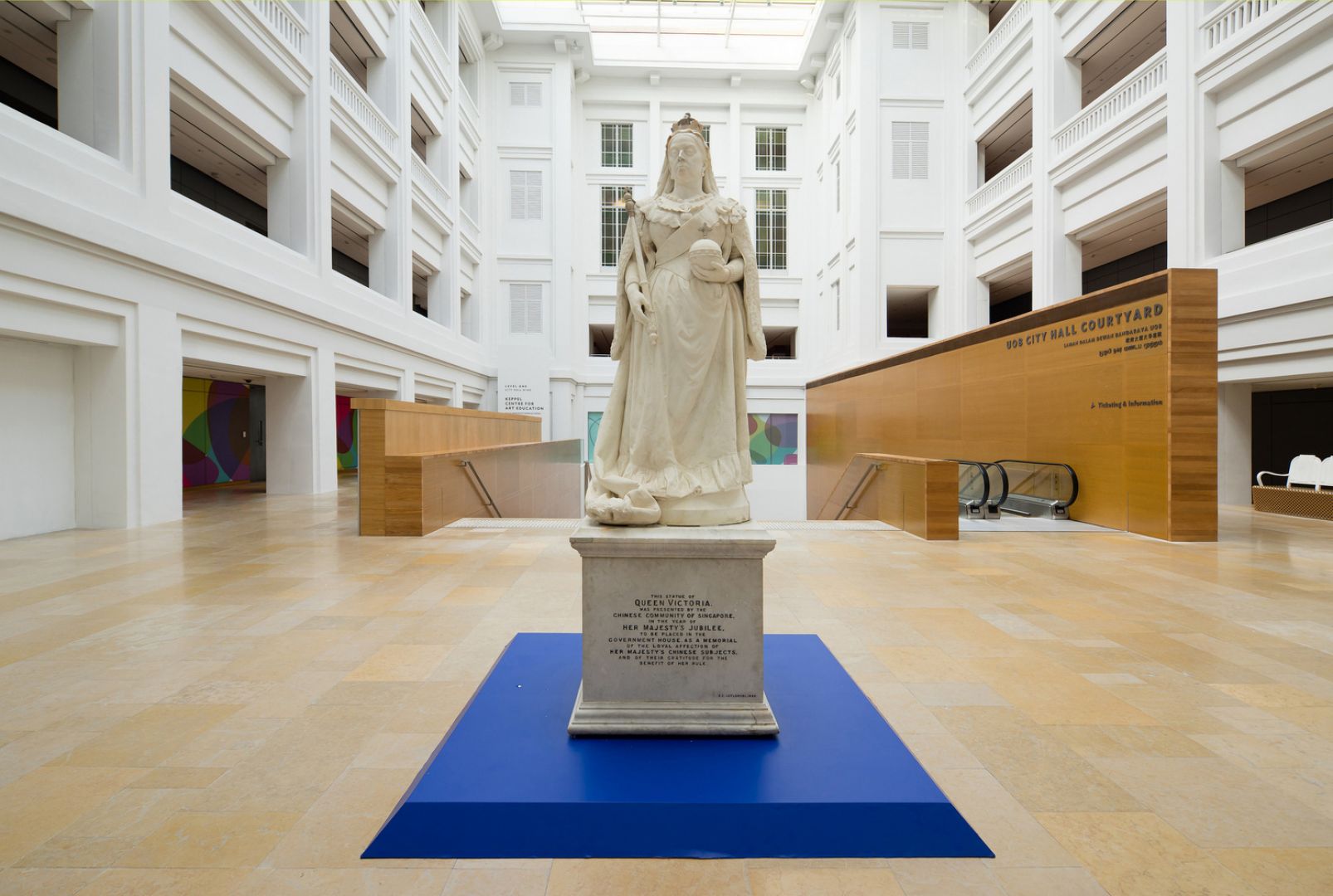
From the ongoing show Artist And Empire. (Photo: TODAY)
The most recent gaffe took place in September, when critics took to task the title of its first fundraising ball. It was initially called Empire Ball to tie in with its ongoing show Artist And Empire, which looked at colonialism.
Critics, including some artists who took part in the exhibition, highlighted the title’s insensitivity and political incorrectness. After much online hoohah, the museum eventually dropped the name.
Aside from these hiccups, other issues cropped up. These included complaints about unclear signage and confusing exhibition layouts; the inordinate amount of fine dining restaurants in an art museum; steep admission prices for international visitors; and even questions about the very buildings themselves and how the 64,000 sq m space seemed way too big for the number of artworks it was housing.
FINDING THE RIGHT BALANCE
Nevertheless, the number of visitors that flocked to the National Gallery in its maiden year seem to indicate that it is slowly being embraced by the public.
And as it enters its second year, observers point out that it’s time for the museum to buckle down and think of its strategies for the future – not just as Singapore’s premier art museum but as one that also has aspirations to be a leading voice in the Southeast Asian art scene.
But juggling between attracting consistently large numbers of visitors and keeping faithful to its core aims as a museum hasn’t been an easy task.
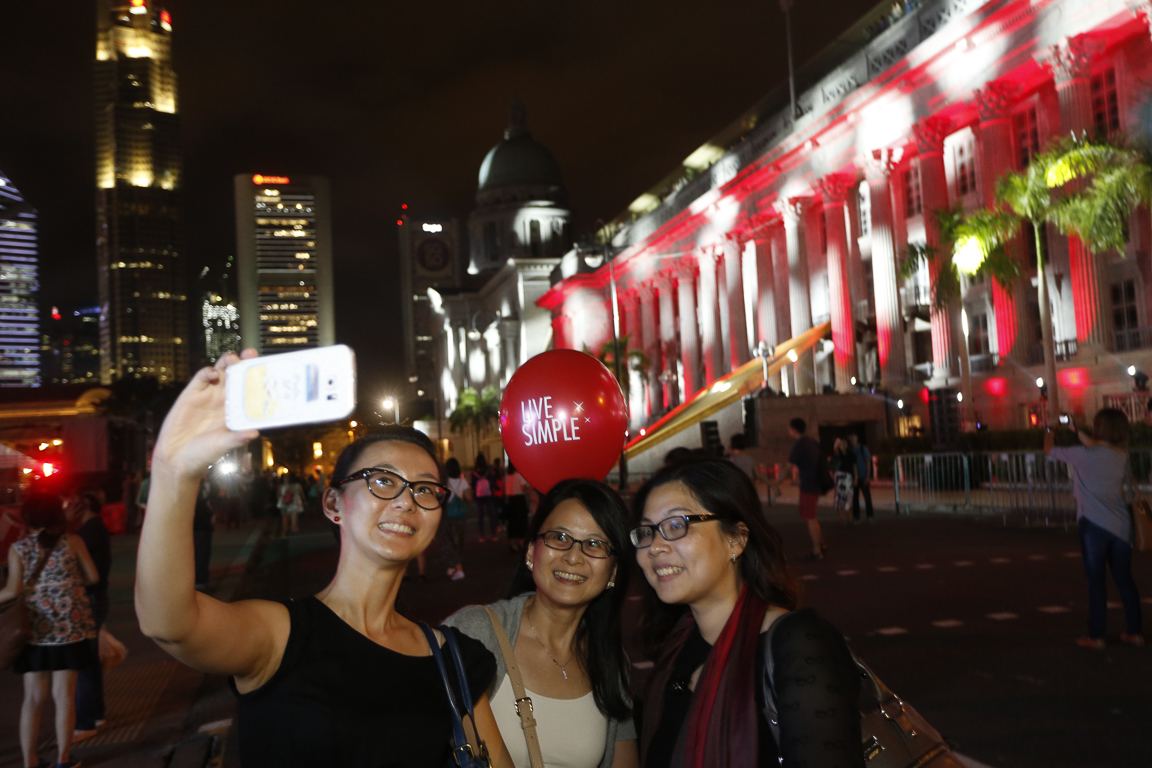
Visitors taking a wefie during the museum’s opening celebrations last year. (Photo: National Gallery Singapore)
Museum director Mr Eugene Tan admitted there are challenges in finding the right balance.
“Given the varying levels of understanding and appreciation of art in Singapore, our public programming and outreach team are continually developing new ideas and programmes to create different entry points to engage our visitors,” he said.
He added: “There is invariably a tension between the curatorial and scholarly aspect of our exhibitions and programmes, and those that will appeal to a larger audience.”
To help attract a variety of people, the museum has worked with non-visual arts events such as the Singapore Fashion Week. It has also been aggressively promoting events for the young, courtesy of its popular children-centric Keppel Centre for Art Education.
Its upcoming first year anniversary festival will feature 60 programmes that include a food area, music and dance performances and other pop events (with, as some have noticed, very little involvement from any of the living artists seen in the museum’s exhibitions).
FINDING ITS IDENTITY
While many of these public programmes have ensured a steady footfall inside the museum, some point out a possible disconnect, and even worry that this approach is merely feeding into the numbers game.
“Yoga, spectacular light shows, tie-ups with blockbuster shows – it just feels too desperate and gimmicky for instant validation,” Singaporean artist-curator Alan Oei told Channel NewsAsia.
The director of alternative art space The Substation, who recently wrote a critical piece about the National Gallery in the art magazine Art Review, added: “I wish NGS would be more confident about its own identity as an art institution. It feels like it doesn’t believe in the power of art. Instead, it’s been more like a marketing agency – trying so desperately to get people into its doors through all sorts of lifestyle angles.”
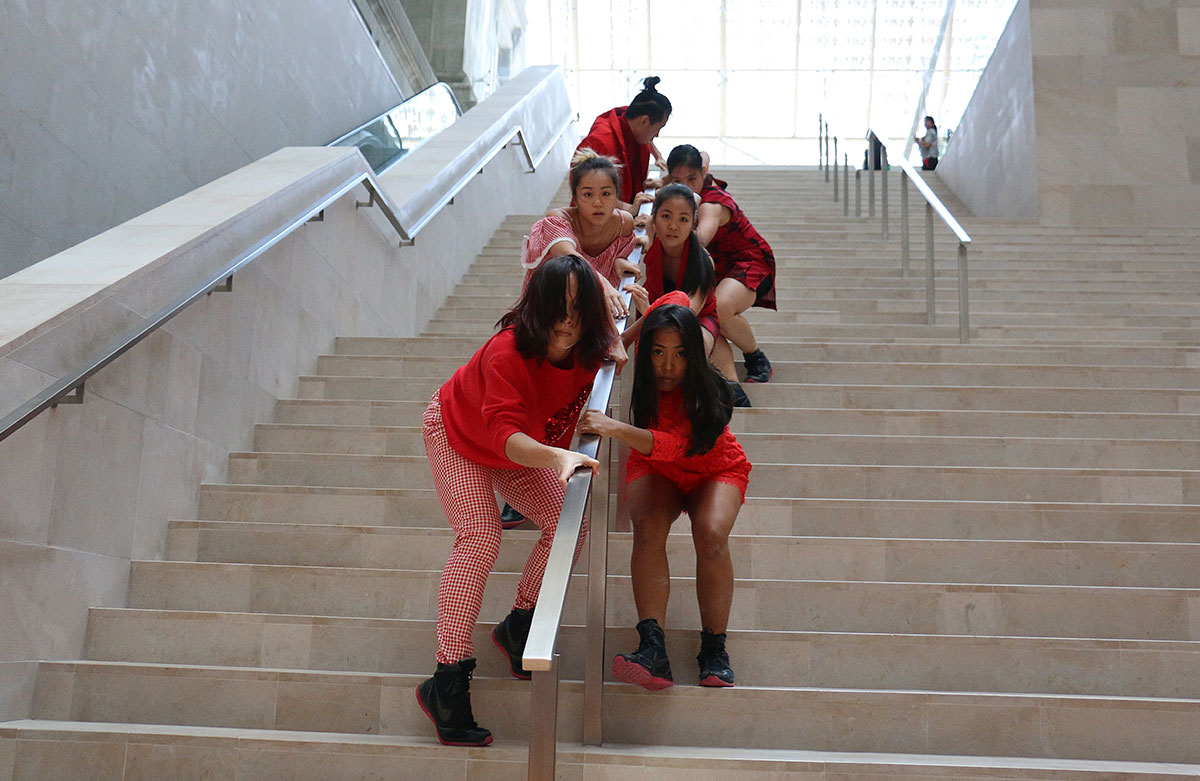
A performance by dance group The Arts Fission Company as part of last year’s opening celebrations. (Photo: Sherlyn Goh)
According to Singaporean artist and curator Mr Khairuddin Hori, the fact that the museum has been actively producing non-visual art public programmes is an “acknowledgement… that today’s audience is one that is diverse and not easily concerned by art alone”.
But the former deputy director of artistic programmes at Paris’ Palais De Tokyo also added that it could do more with these programmes to emphasise its identity.
“Perhaps it is time to look at engagements with Southeast Asia with more diverse lenses even if its core is the art historical. Elements such as music, foods, and other living cultures from the crevices of Southeast Asia could be offered to create holistic and connected conversations, simultaneously giving context to Singapore’s place as a port and internationalised city state,” he said.
LOW-KEY EFFORTS
While the museum continues to do a balancing act in the public eye, it would seem the National Gallery is faring better in its more low-key and less publicised efforts. Many of these aren’t meant to draw the crowds but are equally important — if overlooked — functions for a museum of such stature.
According to Ms Chong, the museum has worked with institutions such as the NTU Centre for Contemporary Art Singapore and LASALLE College of the Arts, Cultural Center of the Philippines, National Art Museum of China and Fukuoka Asian Art Museum (Japan) for research programmes, seminars and the like.
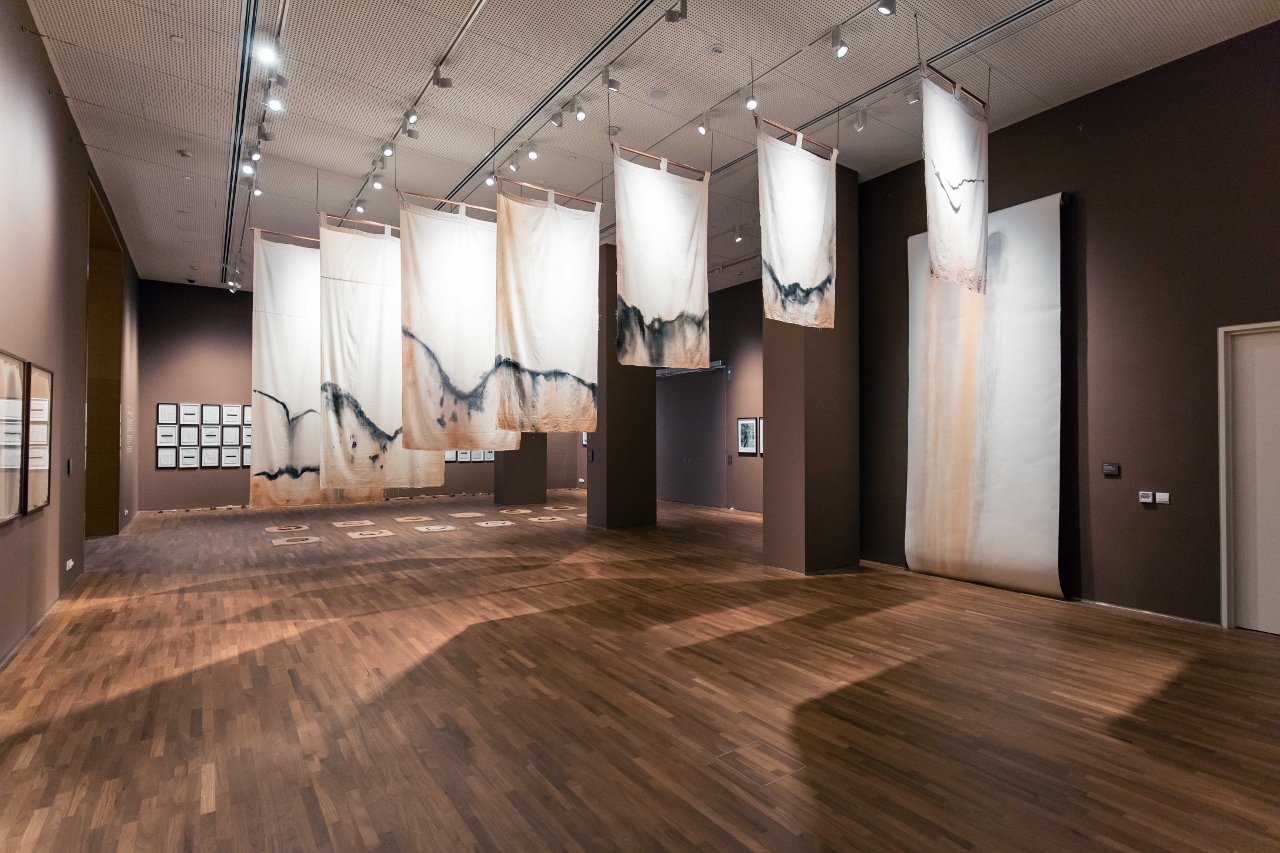
Singaporean artist Tang Da Wu’s Earth Work 1979. (Photo: National Gallery Singapore)
Forums, talks and workshops have also been a regular occurrence, said Mr Tan.
They recently organised a session with Vietnamese-born Danish artist Danh Vo, whose commissioned work is currently up at the Ng Teng Fong Roof Garden Gallery.
During their Reframing Modernism exhibition, the son of one of the key figures in Thai modern art was invited to a talk, while Singaporean film-maker Royston Tan was also recently invited to discuss his experiences as a student under Iskandar Jalil.
There are also plans to work with various institutes in Bandung, Indonesia, and Sydney, Australia.
And while the museum’s collaborations with western museums are the ones getting all the buzz, they are also planning a future show with notable museums in Japan and Korea.
THOUGHTS FROM THE REGION
And there is, of course, the museum’s regular tie-ups with other institutions in Southeast Asia.
Indeed, while the National Gallery is a Singapore institution, the fact that it looks at Southeast Asian art on such a large scale has meant that its neighbours are also keeping an eye on its progress.
While Mr Tan has shied away from describing the museum as a centre for regional art, its presence has undoubtedly had some impact outside of Singapore.
“I have felt so much enthusiasm among many Thai artists, collectors, galleries, and cultural institutions here towards (the National Gallery),” Ms Luckana Kunavichayanont, director of the Bangkok Art and Culture Centre, told Channel NewsAsia.
“I’ve noticed that the (museum’s) acquisition of regional works also boost so much hope for established and emerging artists here in Thailand, since we have few museums and collectors collecting art. To get recognition and be acquired by a major regional art institution has helped boost (some artists’) careers and prosperity.”
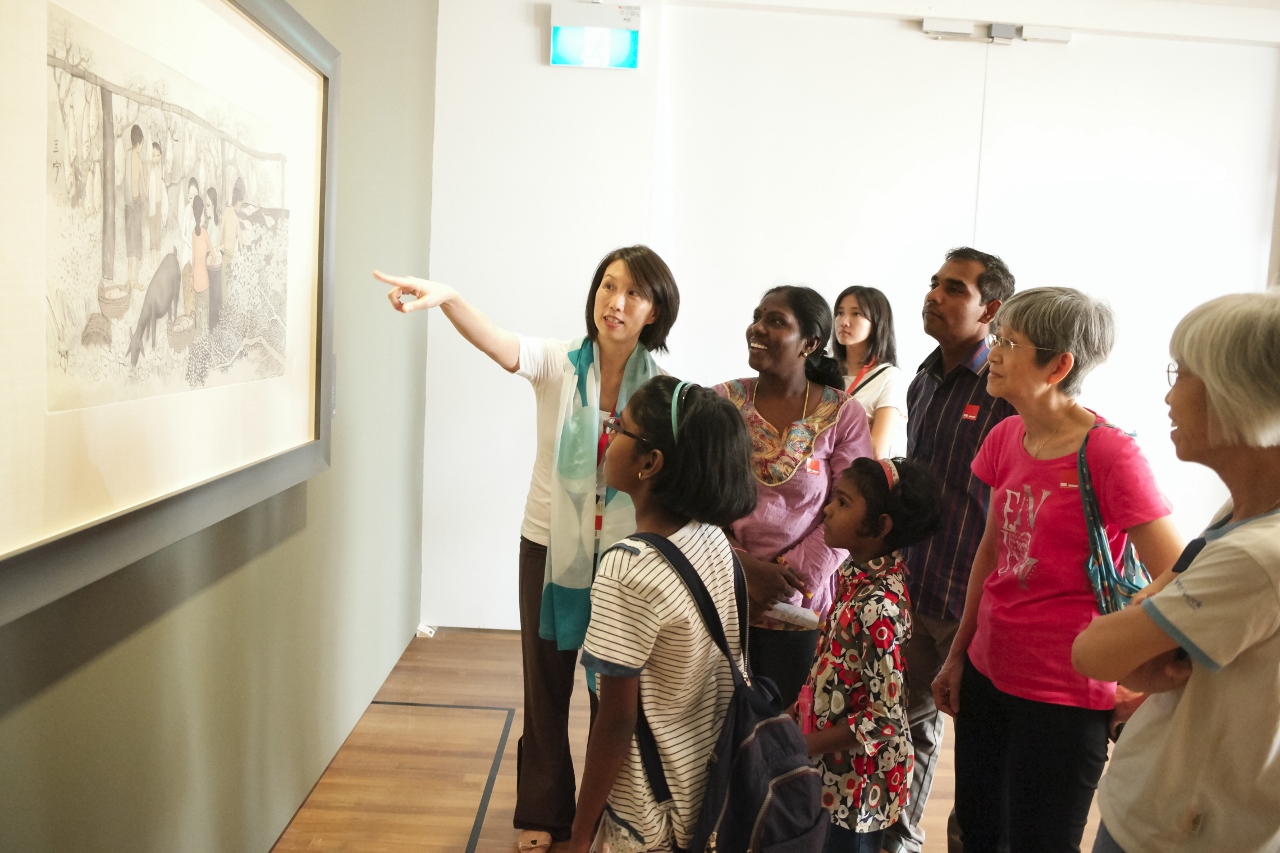
(Photo: National Gallery Singapore)
Mr Patrick Flores, curator for the Vargas Museum in the Philippines, also weighed in on the National Gallery’s regional aspirations. “Like many Southeast Asians, Filipinos should be able to appreciate this survey offered by the NGS and to find Philippine art adequately represented,” he said.
But at the same time, both of them acknowledged the complicated tasks the museum has taken upon itself by attempting to tackle art from a rather complex region.
“NGS has made a case for both national and regional art history, Singapore and Southeast Asia. What it can do is to offer ways through which to understand why this project is difficult and informed by fundamental problems of difference and complex representation,” said Mr Flores.
“It could be too soon to judge whether they have achieved their goal, it will take time and huge efforts for everyone involved,” added Ms Kunavichayanont.
TOO EARLY TO TELL
Indeed, a year is hardly enough time to gauge a project of such scope and magnitude as the National Gallery, even for those in Singapore.
“The real impact of NGS will only be felt generations later,” said Mr Oei. “A whole new generation of children and Singaporeans will have a great collection accessible to them. The question is how will NGS frame their experience?”
It’s a sentiment echoed by Singaporean artist and educator Ezzam Rahman, who regularly encourages his students to visit the museum for inspiration.
“You need to give the National Gallery some time for it to grow and flourish. You cannot expect it to be the next Tate Britain overnight. It’s like growing a seed — you can’t expect a tree to grow in a year,” he said, before adding: “But it’s very important to have one that houses these important works from Singapore and Southeast Asia, and to show it to the people.”
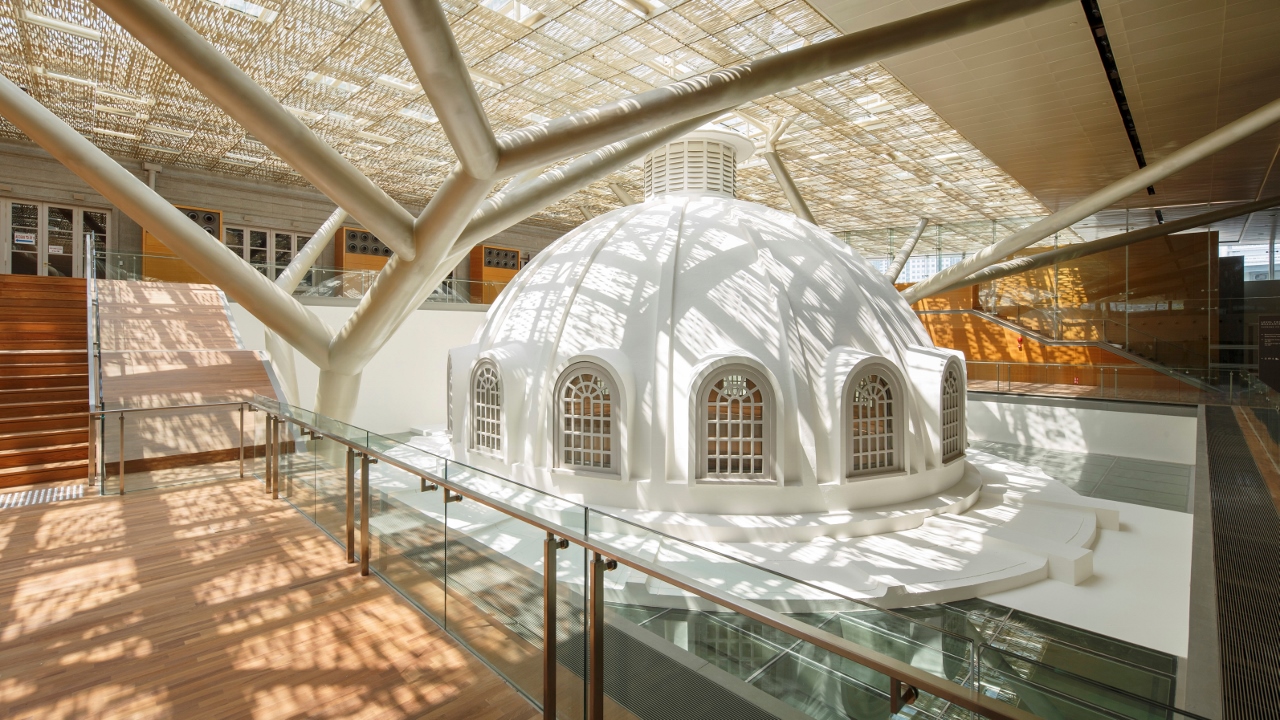
(Photo: National Gallery Singapore)
***
THE GOOD, THE BAD, THE NATIONAL GALLERY
Happy Birthday, National Gallery Singapore. We look at some of the highs and lows of its first year.
THE GOOD
1. THE PERMANENT EXHIBITIONS. The museum has mostly done a great job in framing blockbuster shows, such as Artist And Empire, from a regional perspective. Its smaller shows on iconic artists from the region also deserves praise. But ultimately, the two anchor shows on Singapore and Southeast Asian art are what holds the very idea of the National Gallery together. With 800 artworks on display, it’s a sweeping, ambitious undertaking that’s worth a return visit or three.
2. KEPPEL CENTRE FOR ART EDUCATION. The best way to grow audiences is to start them young, and the judging by the regular sight of schoolkids at the museum, it seems they’re pursuing them quite aggressively. And yes, there are some good art to be found there, too.
3. THE ARCHITECTURE. There have been criticisms about the confusing layout of the space, how cavernous the entire museum feels, but it’s probably no surprise that the two combined historical buildings have been a draw as much as the art on display. Sure, it might take time to get accustomed to the huge spaces – and the museum really does have to look at how it can utilise these properly – but you can’t ignore the history these buildings exude.
THE COULD-BE-BETTER
1. IMAGE PROBLEMS. Once in a while, the National Gallery pops up in the news (or newsfeeds) for the wrong reasons. Opinions travel fast in the age of social media – as was the case during the controversy surrounding the Empire Ball. Surely someone had pointed out that unironically naming a lavish fundraising event after an exhibition that sought to question colonialism was in questionable taste?
2. MORE OF SOUTHEAST ASIA. The exhibitions have done well in showcasing the region’s wealth in terms of visual arts, but more could be done with regards to the other programmes. With an entire region’s arts and culture to explore, the possibilities of bringing in artists of sorts are kind of endless – whether it’s performing arts, music, food, film, traditional or contemporary. In due time, perhaps?
3. AUDIENCE ETHICS. It’s hardly the first museum in Singapore but during the opening festivities, we realised it might just take a while for audiences to figure out the, well, rules of engagement inside a museum. Touchy-feely might work in certain interactive works, but David Medalla’s bubble sculpture isn’t one of them.
